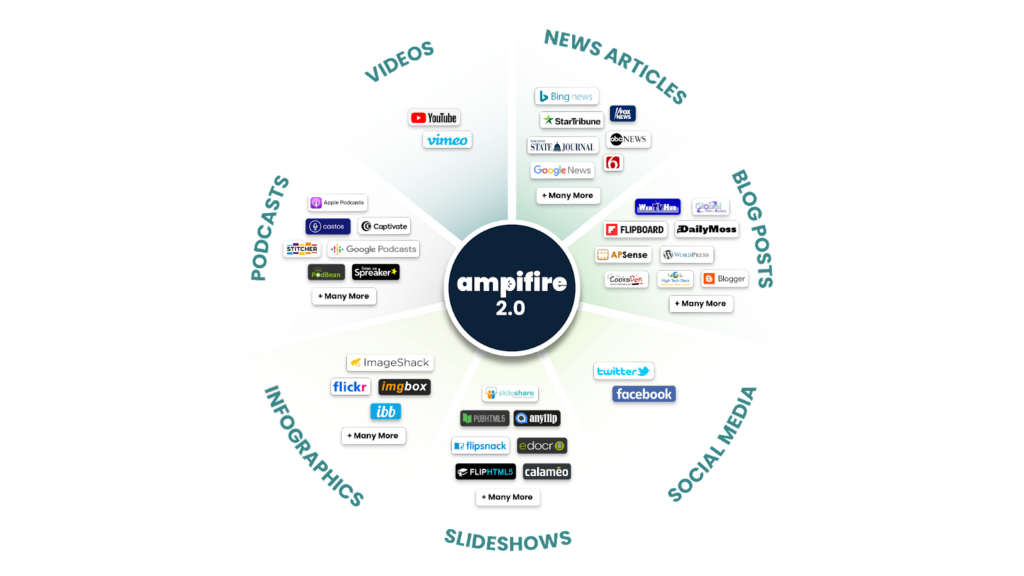- The Essential Components of an Effective Press Release
- Headline: Crafting a Compelling and Newsworthy Title
- Dateline: Positioning Time and Place in Press Releases
- Introduction: Briefly Summarizing the Core News
- Multimedia: Best Practices for Multimedia Inclusion
- Data & Statistics: Using Data to Strengthen Your Case
- Boilerplate: Consolidating Your Company’s Profile
- Contact Information: What to Include in Your Contact Section
- SEO Keywords & Metadata: Choosing the Right Keywords for Your Audience
- Maximizing Impact: The Synergy of Craftsmanship and Amplification
- Frequently Asked Questions (FAQ)

The Essential Components of an Effective Press Release
Crafting an impactful press release is an art form that requires attention to detail and a deep understanding of your audience. A well-written press release not only garners media attention but also connects with your target audience, conveying your message in a clear and compelling manner.
From the gripping headline that captures interest at first glance to the succinct summary of the who, what, when, where, and why, each component plays a vital role in the storytelling process. This introduction delves into the critical elements that compose a successful press release, ensuring your news stands out in a crowded media landscape.
Headline: Crafting a Compelling and Newsworthy Title
Your headline is the first, and possibly only, impression you make on a prospective reader. It should be a beacon that catches the eye and draws people in. Because it’s the gateway to your story, make it count. Here’s how:
- Keep it short and sweet. Aim for fewer than 10 words if you can.
- Use active verbs. They bring your headline to life.
- Make it specific. Vague headlines don’t tell the reader anything.
- Highlight what’s unique. If your news is groundbreaking, your headline should be too.
Original Product Launch Headline: “Local Company Releases New Product”
Revised, Compelling Headline: “Local Tech Innovator Unveils Game-Changing Eco-Friendly Smartphone”
Dateline: Positioning Time and Place in Press Releases
The dateline is a small but mighty part of your press release. It tells readers when and where the news is coming from. Always include the city where your company is headquartered followed by the date. The format should be straightforward, like this:
This lets journalists know the news is fresh and gives context to your announcement. If your news is time-sensitive, the dateline becomes even more crucial. It signals to reporters that they need to act fast.
Original Dateline Format: “Los Angeles Released Today”
Revised Dateline Example: “LOS ANGELES, February 9, 2024 —”
Introduction: Briefly Summarizing the Core News
The opening paragraph is where you hook your reader. It’s your elevator pitch. In just a few sentences, you need to convey the essence of your news. Who is involved? What happened? When did it take place? Where is it happening? Why is it important?
This introduction covers all the bases — it tells who is doing what, the scale of the news, and its impact. Now, you’ve set the stage for the rest of the press release.
Original Introduction: “Our company is launching a new service next month that we think people will like because it’s innovative and helpful.”
Revised Introduction Example: “In a groundbreaking move set to redefine the tech landscape, XYZ Corp. announces the launch of its revolutionary AI-driven customer service platform, designed to offer unparalleled support efficiency and accuracy, starting March 15, 2024.”
Multimedia: Best Practices for Multimedia Inclusion
Incorporating multimedia in your press release can make it stand out and be more engaging. Including high-quality images, videos, or infographics can help tell your story visually. This is especially important because visual content can be more easily shared and digested. Here’s what you should remember:
- Only use high-resolution images and videos.
- Ensure that multimedia is directly relevant to your content.
- Provide captions and alt text for images for better SEO and accessibility.
For example, if you’re announcing a new product, include an image of someone using the product, or a short video tutorial. This not only makes your press release more engaging but also gives journalists ready-to-use assets for their stories.
Original Multimedia Usage: “We’ve attached a photo of our new product.”
Revised Multimedia Inclusion Example: “Accompanying this announcement, we’re providing high-resolution images showcasing our new product in action, a behind-the-scenes video detailing the innovation process, and an infographic summarizing the product’s key benefits and features, all designed to enrich the reader’s understanding and engagement.”
Data & Statistics: Using Data to Strengthen Your Case
Using data and statistics in your press release can significantly bolster your credibility. It provides tangible evidence to support your claims and can be a powerful way to highlight the significance of your news. When including data:
- Ensure your data comes from reliable sources.
- Use statistics that are relevant and impactful.
- Present data in a clear and easy-to-understand format.
Remember to explain why the data matters. If you’re discussing an increase in sales, connect it to a broader trend or its impact on the industry. This helps to contextualize your news and show its relevance.
Original Data Mention: “Sales have increased this year.”
Revised Data & Statistics Example: “Illustrating our market impact, XYZ Corp. reports a 25% surge in sales in Q1 2024 compared to Q1 2023, reflecting the growing consumer demand for sustainable products, as verified by independent industry research.”
Boilerplate: Consolidating Your Company’s Profile
The boilerplate is the “About Us” section of your press release. It’s a concise paragraph that provides background information about your company. This should be consistent across your press releases and include:
- A brief history of your company.
- Your mission statement or core values.
- Any notable achievements or awards.
- Links to your website and social media profiles.
This section isn’t the place for hard selling. Instead, it’s an opportunity to build trust and authority by sharing relevant and factual information about your company.
Original Boilerplate: “Our company has been around for a while and offers a variety of services.”
Revised Boilerplate Example: “Founded in 2010, XYZ Corp. is a leading innovator in sustainable technology solutions, committed to transforming the industry with eco-friendly products that meet the modern consumer’s needs. Recognized globally for its pioneering approaches and commitment to excellence, XYZ Corp. continues to set benchmarks for sustainability and innovation. For more information, visit our website at www.xyzcorp.com.”
Contact Information: What to Include in Your Contact Section
The contact section of your press release is vital. It provides journalists and interested parties with a direct line to your spokesperson or media relations contact. Be sure to include:
- Full name of the contact person
- Phone number
- Email address
- Company address (optional)
Make sure the contact information is up to date. There’s nothing more frustrating for a journalist than reaching out to a contact that no longer works at your company.
Original Contact Information: “For more info, contact our office.”
Revised Contact Section Example: “For further inquiries or to schedule an interview, please contact Jane Doe, Director of Public Relations at XYZ Corp., via email at jane.doe@xyzcorp.com or by phone at (123) 456-7890. You can also visit our website at www.xyzcorp.com for more information.”
SEO Keywords & Metadata: Choosing the Right Keywords for Your Audience
Search engine optimization (SEO) isn’t just for websites. It’s also crucial for press releases. Choosing the right keywords can help your press release rank higher in search results, making it more likely to be seen by your target audience. Consider:
- What terms your audience is likely to search for.
- What keywords are relevant to your news.
- Using tools like Google Keyword Planner to find popular keywords.

Don’t stuff your press release with keywords, as this can make it difficult to read and may be penalized by search engines. Instead, integrate them naturally into your content.
Original Keyword Approach: “New product, company news”
Revised SEO Keywords & Metadata Example: “Eco-friendly smartphone launch, XYZ Corp innovation, sustainable tech solutions 2024, cutting-edge AI customer service platform, green technology advancements”
Maximizing Impact: The Synergy of Craftsmanship and Amplification
Crafting an effective press release is an intricate process that demands a careful blend of compelling components, each playing a crucial role in capturing media attention and resonating with target audiences.
From crafting a headline that grabs attention to integrating SEO keywords for wider visibility, every element is designed to not just inform but engage and connect with readers. This meticulous attention to detail ensures that your news doesn’t just circulate but makes a lasting impact, setting the stage for meaningful engagement and coverage in the crowded media landscape.

Ampifire amplifies this impact by leveraging its expertise in content amplification and digital marketing to extend the reach of your press releases far beyond conventional boundaries. Their strategic approach ensures that your message is not only distributed across a wide array of platforms but also tailored to meet the interests and needs of your target audience.
This partnership between well-crafted press releases and strategic amplification with Ampifire represents the modern blueprint for successful communication, ensuring that your announcements are not only seen but are impactful, engaging, and actionable.
Looking to amplify your digital marketing outcomes?
Explore how AmpiFire can revolutionize your press releases, crafting killer headlines and optimizing your content for wider distribution. Benefit from unparalleled visibility on platforms like Google News, YouTube, SlideShare, Apple Podcasts, and many more…
Click Here To Learn More
Frequently Asked Questions (FAQ)
A press release should be concise and to the point. Ideally, it should be one page long, which is about 400-500 words. However, if you need more space to include essential details, it can extend to two pages. The key is to ensure every word counts and contributes to your message. Remember, the goal is to communicate your news efficiently. Journalists are busy and appreciate brevity. If your press release is too long, it might not get read at all.
There’s no one-size-fits-all answer to this question—it depends on your company’s news cycle. But as a rule of thumb, you should only send out a press release when you have something newsworthy to share. Flooding the media with press releases that lack substance can damage your credibility.
-Being too promotional. Remember, a press release is a news item, not an advertisement.
-Forgetting to proofread. Typos and grammatical errors can undermine your credibility.
-Overusing jargon. If a twelve-year-old wouldn’t understand it, rethink your wording.
-Missing a clear call to action. Tell readers what you want them to do next.
Yes, a press release can be too short if it fails to provide the essential information that journalists and readers need to understand your news. While brevity is a virtue, completeness is crucial.
Don’t leave out key details for the sake of brevity. If you find your press release is too short, go back and ensure you’ve answered all the important questions. Have you explained why your news matters? Have you provided context? Is there a quote that could add depth to your story? Remember, your goal is to be comprehensive yet concise.
To maximize the chances of your press release being picked up by major media outlets, focus on creating a compelling and newsworthy headline that instantly grabs attention. Ensure your press release is concise, well-structured, and includes relevant and engaging multimedia elements. Tailor the content to highlight the unique angle or significance of your news, making it irresistible to journalists and media professionals. Additionally, distribute your press release through reputable wire services and directly to journalists who cover your industry or topic. Building relationships with these journalists over time can also increase the likelihood of future coverage.
